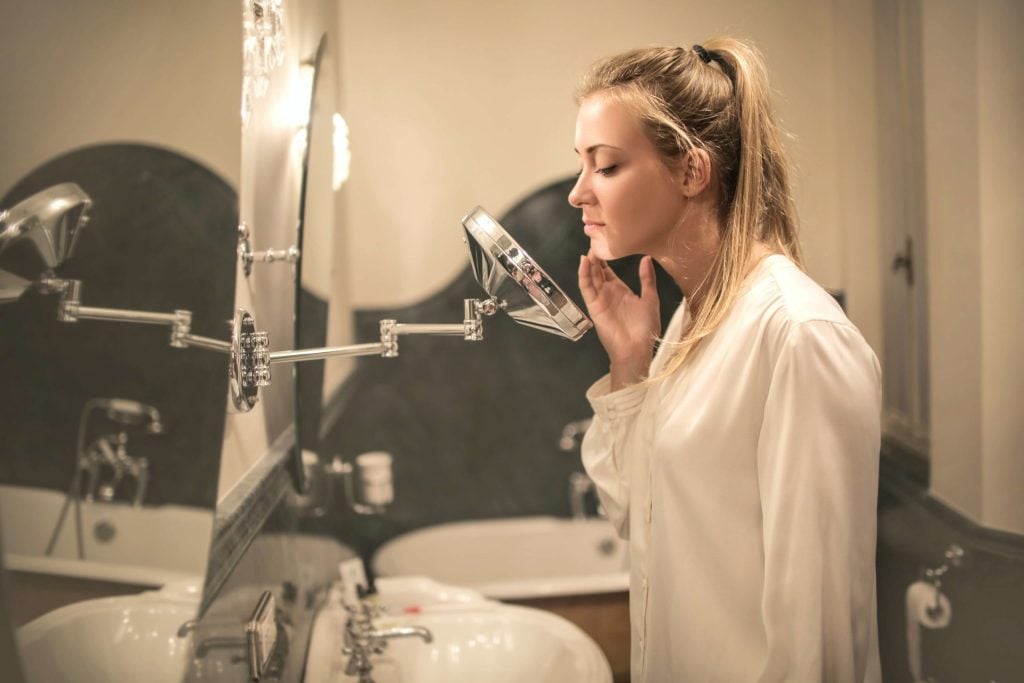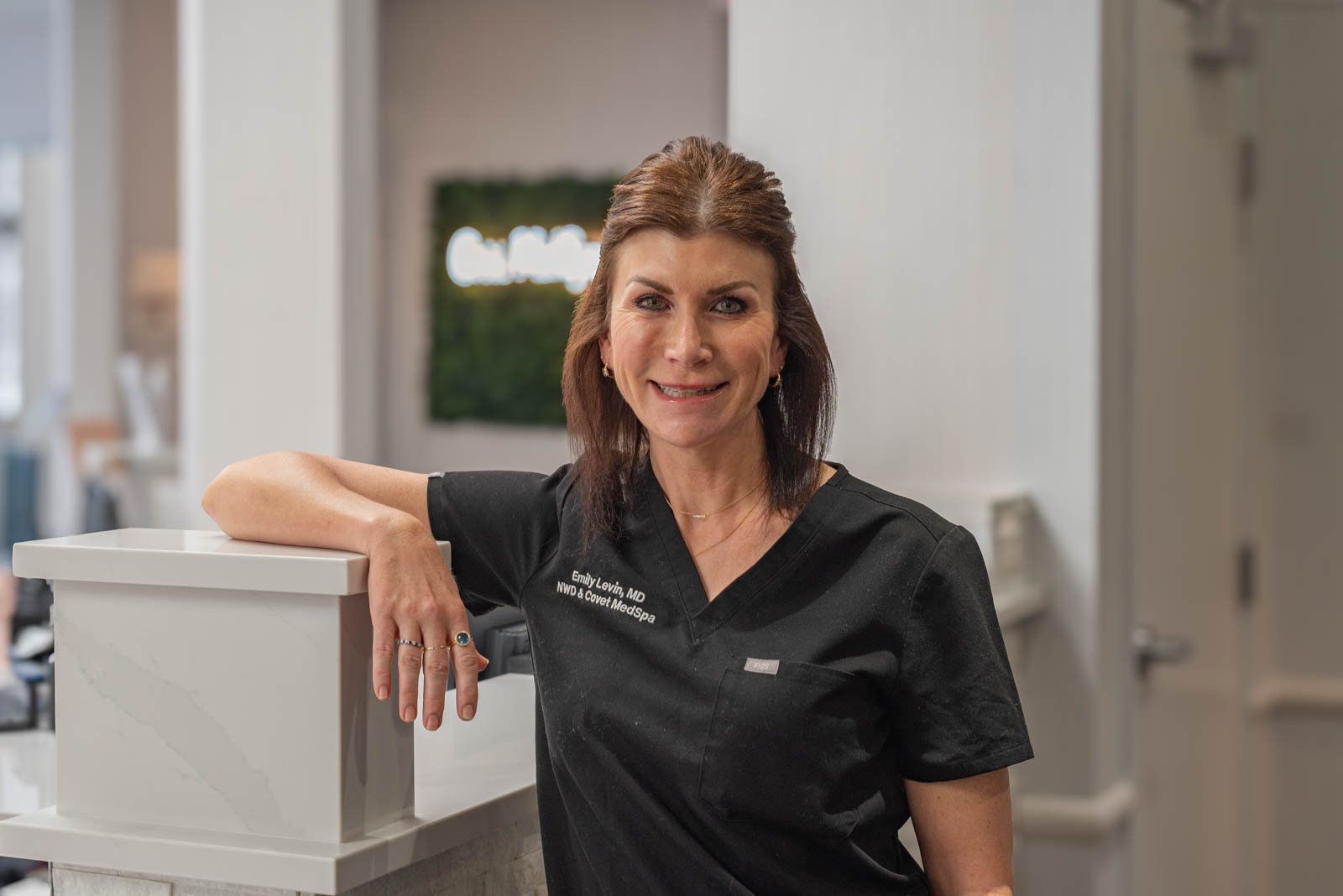Zits are for kids, right? Not necessarily. Just when you thought you’d gotten beyond pubescent breakouts, acne flares up – again. Among women, the culprit is often referred to as hormonal acne, and it can afflict us in our 20s, 30s, 40s and beyond.
Defining Hormonal Acne
The term hormonal acne is often used to describe adult-onset female acne. And as the name suggests, a strong hormonal component is involved. Generally, flare-ups coincide with the menstrual cycle or pregnancy, when hormonal fluctuations are most pronounced. The decline in hormone production that accompanies menopause can once again trigger acne, just when we thought those bumps and
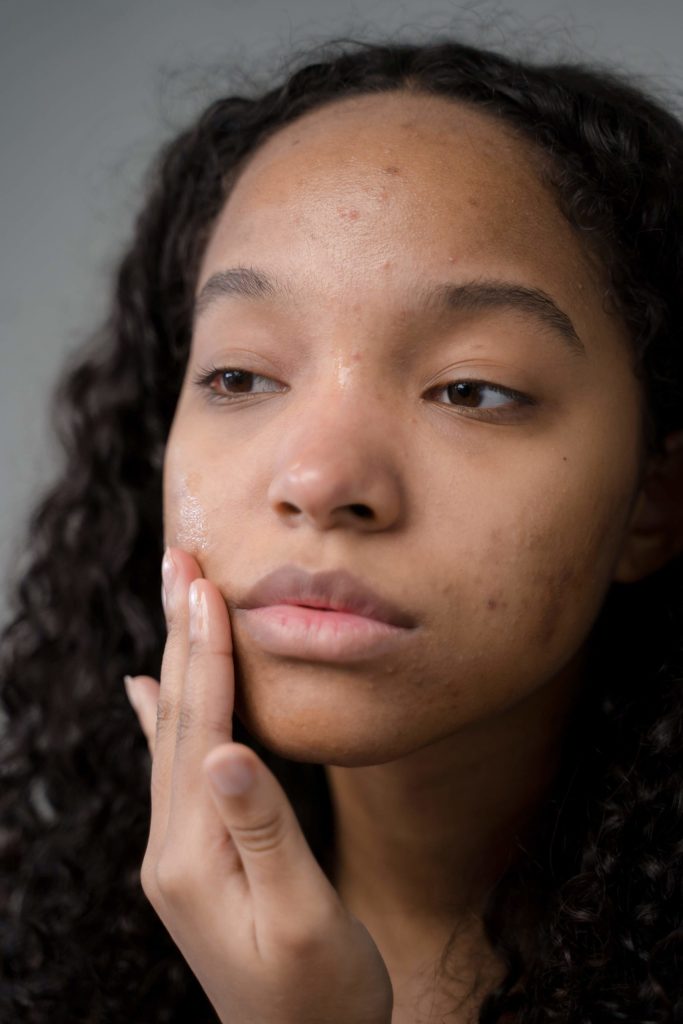
lesions were finally gone.
The American Academy of Dermatology characterizes acne as the most common skin condition in the country. It is estimated to affect as many as 50 million people at any given time. Treatment costs top $1 billion a year. The problem develops in response to hormonal changes. Changes like the rise in testosterone associated with puberty and monthly fluctuations of progesterone and estrogen among women. These, in turn, lead to alterations in skin cell activity Causing inflammation of pores, and hair follicles clogged with oil and bacteria. Hello, acne, in a range of types and forms.
Hormonal changes are linked to development of acne at every age. Because of that some medical professionals do not recognize hormonal acne as a distinct phenomenon. Many dermatologists and specialists, however, describe specific types of cyclical outbreaks that appear among women as hormonal acne. For purposes of this discussion, that’s the definition we’ll use.
Hormonal Symptoms Characterized
Several factors indicate your aggravating skin eruptions are linked to hormonal acne.
- Since hormones and acne go together, nearly half of women experience outbreaks in the decades beyond teenage years. With the body genetically focused on pregnancy, childbirth, and breastfeeding, hormones actually peak in your 20s and early 30s. Acne can result, even if it passed you by when younger. Menopause causes another acne surge as hormone production fades and your body is once again forced to adjust.
- Hormonal acne tends to appear on your lower face, around the jawline, and down the neck; that’s because excess hormones stimulate the oil glands, many of which are around the chin area. Teenage acne, on the other hand, concentrates on the forehead, nose, and chin, and skin lesions are different.
- Hormonal acne often manifests in painful, fluid-filled cysts, nodules, and pustules deep under the skin’s surface rather than the top-level whiteheads and blackheads typical of teen years. These bumps can be tender and inflamed, growing over a period of days or weeks. Given the acute nature of such outbreaks, a clinical approach to treatment may be required.
- Even in postmenopausal women, hormonal acne is cyclical, coinciding with patterns that occur at the same time every month. Breakouts pop up in the same place each month as well.
- Cortisol, the stress hormone, affects all other hormones, causing everything to be out of whack. Stress to the extreme defines the COVID-driven pandemic of the last two years, setting up ideal conditions for a hormonal acne flare.
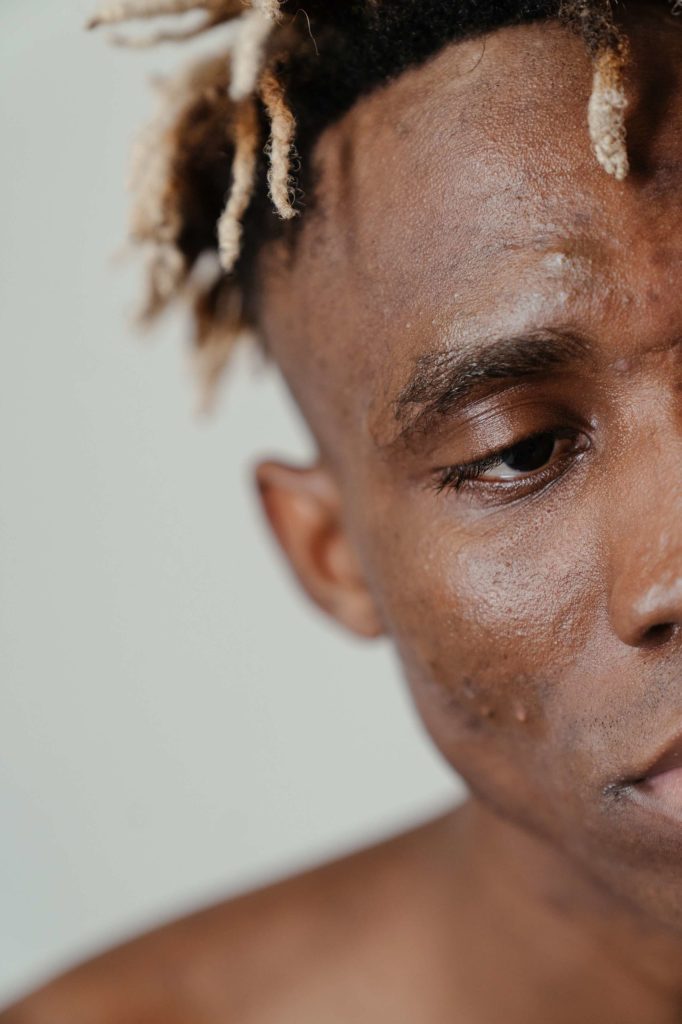
Treating Hormonal Acne Takes Time
Basically, there are two ways to go: trying over-the counter remedies or seeking professional help.
Although hormonal acne may eventually improve on its own, it can be a chronic problem that’s tough to get rid of without personalized treatment. Ignoring hormonal acne can lead to long-term issues, including scarring and emotional distress.
Over-The-Counter Cleanser
Over-the-counter cleansers contain ingredients that help exfoliate the skin by unclogging pores. Look for products that contain alpha or beta hydroxy acids, such as glycolic, lactic, or salicylic substances. Topical retinoids are another OTC choice. These items remove dead skin cells so they don’t bind together and block pores. Both cleansers and retinoids may help prevent new acne from developing, especially when coupled with gentle, twice-daily face washing and wearing sunscreen to protect infected skin. The flip side is that over-the-counter products may be pricey and cannot penetrate deep under the skin where most hormonal acne eruptions reside. At that point, treatment is needed by a dermatologist or other medical professional.
Prescription Medications
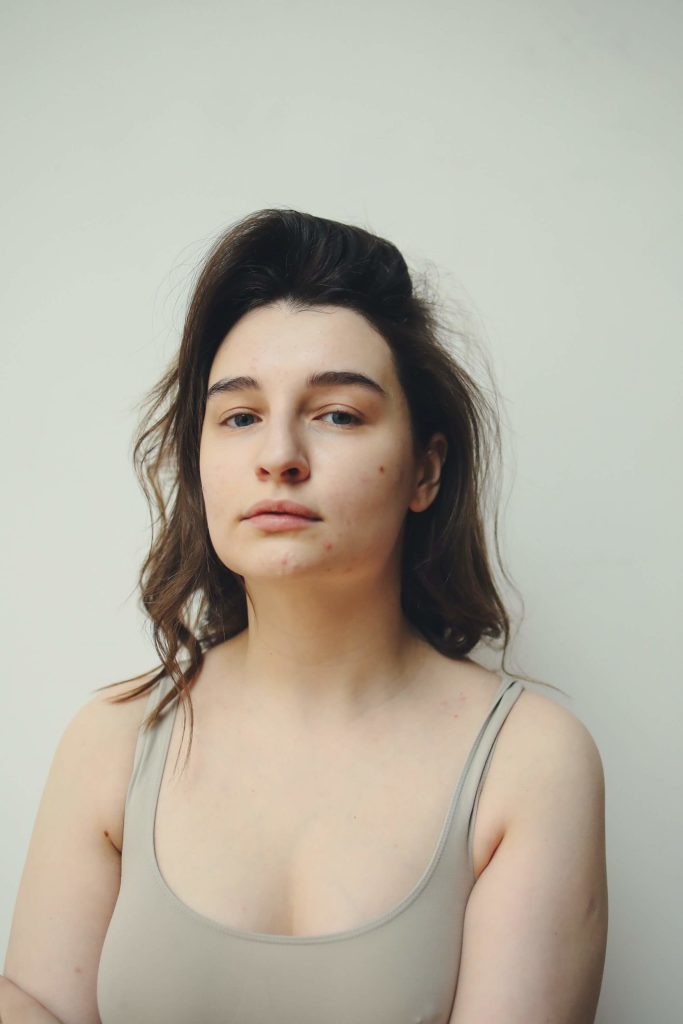
Prescription medications work from the inside out to balance hormones and clear up your skin. Oral contraceptives, a frequently used form of hormonal therapy, can be very effective. In fact, several are approved by the U.S. Food and Drug Administration for acne treatment in addition to birth control. Reducing male hormones, primarily testosterone, with low levels of antiandrogen drugs is another tactic for improving hormonal acne. A type of oral vitamin A called Isotretinoin reduces oil production and helps renew the skin. With all such treatments, careful consultation with your dermatologist is required to reduce the risk of side effects and ensure drugs are not used during pregnancy.
Natural treatments like tea tree oil, green tea, and masks and creams containing aloe vera, benzoyl peroxide, passionflower extract, sulfur, and other ingredients may appeal to some people, with the caveat that efficacy is not scientifically validated. The role of diet relative to hormonal acne isn’t fully understood either, although limiting sugar, dairy, white carbs, and red meats and getting regular exercise makes good sense.
Successful treatment of hormonal acne often requires a combination of over-the-counter products and professional management. And improvement can take a while—eight to ten weeks or more. So be patient, stay persistent, work with your doctor, and focus on getting zits out of your life.

